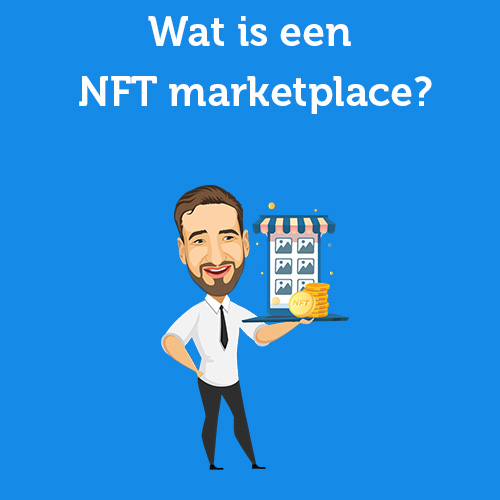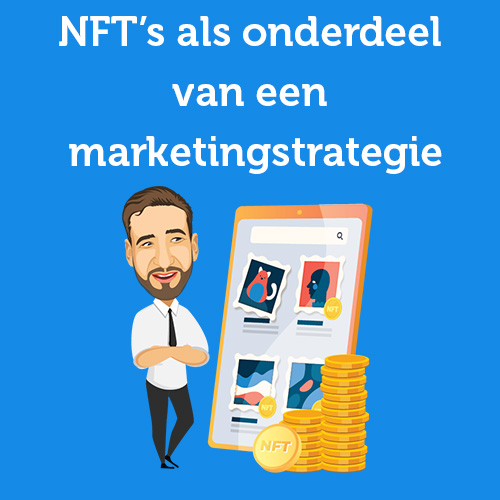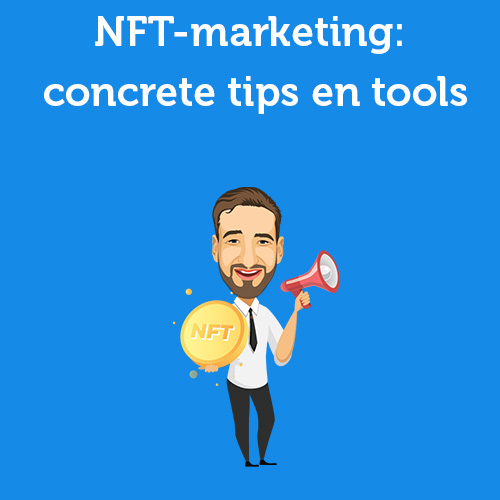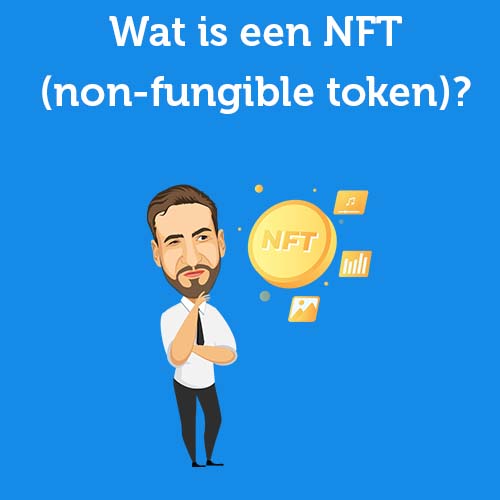Menu
Table of contents
NFT
NFT stands for Non-Fungible Token and I often describe it as:
- A digital tool
- A digital piece of real estate
- A digital piece of ownership
This could be a digital painting, but also a sword in a game, a video, a hat in a virtual world, a digital Pokémon card or a digital ticket to the cinema.
Literally anything you can later buy or sell as an NFT. Your house will soon also become an NFT, a lease, a loan and so on. Literally everything you can own and have agreements involved with will soon become an NFT.
Smart contract
A smart contact is nothing more than a coded agreement (or contract) between parties. This contract can accompany an NFT in certain cases.
Consider, for example, a lease, a marriage contract or a loan. The unique feature of a smart contract is that it does not require a party to make the contract. Thus, it is an agreement between two or more parties.
The special thing about a smart contract is that it is self-executing. The code determines what happens and this is irreversible.
Wrapping
Wrapping means nothing more than wrapping your NFTs (in a kind of digital vault). Wrapping your NFTs can be done so that you can more easily exchange it (especially in large numbers) for Ethereum, other NFTs or other blockchains, for example.
This is especially important because different types of standards (also called protocols) can be built within the NFT. Not all protocols can talk to each other. And when you wrap something, you actually wrap it ... So that your NFT can be used on more protocols.
Unwrapped
And unwrapped, of course, means that your NFT is no longer wrapped ;-).
Minting
Minting I personally think is another word for "making. When you 'mint' an NFT, it is nothing more than placing your NFT on Ethereum (or another blockchain/protocol).
In other words, by mining an NFT, your NFT becomes part of the public blockchain.
Meta data
The meta data of an NFT contains information about what the NFT is, and that ensures that the NFT marketplaces can easily display the NFTs (and that the NFTs can be easily searched within the platform).
The meta data contains things such as the name, description and, for example, properties of an NFT.
Royalties
In the world of NFTs, royalties are very common. A royalty is nothing more than a payment for the continued use of something.
So not only do you make money when you have sold an NFT, you can also make money when the NFT is resold.
This can be 1% or it can be 15%. Depending on what you have agreed upon.
Wallet
A wallet is a digital library where you store all your NFTs. A wallet can be "open" to anyone. Then anyone can view the contents of your wallet.
A wallet can also be private and not viewable by everyone.
Contract address
A contract address or an address of your wallet can be compared to the address of your home. In other words, it is a kind of address of your wallet where your NFTs reside.
And just as you can send mail to the address of your home, you can send NFTs to an address of your wallet.
Tokenization
Tokenization is nothing more than dividing your physical or digital asset (for example, an NFT or a house) into digital units (for example, a crypto currency) that can be sold again.
If an expensive NFT of, say, 1 million euros is "tokenized," then multiple people can become owners of that NFT.
ERC-20
ERC-20 is a protocol that runs on Ethereum and it defines a set of rules that all tokens must meet within that network. Consider things like the value, total number of tokens and how transactions must be approved.
ERC-721
ERC-721 is also a protocol within Ethereum developed specifically for NFTs. This implements the smart contracts we mentioned earlier.
ERC-1155
ERC-1155 is also a protocol within Ethereum created specifically to combine the unique facets of ERC-20 and ERC-721. ERC-1155 thus combines the power of tokens and the power of NFTs.
Gas fee
Gas fee is an amount you have to pay as compensation to validate the transaction on the blockchain. To validate the transactions, computers (computing power) and, of course, electricity are used. Through gas fee, you compensate the people who provide the computing power and use the power.
Marketplace
A marketplace is a place that brings together NFT buyers and sellers, which means you can buy or sell NFTs.
MetaMask
MetaMask is one of the most widely used Ethereum wallets (and a Google Chrome extension) that allows you to store your Ethereum. MetaMask is mainly used to transfer your ethereum from the exchange to the marketplaces.
Ethereum
The last term is, of course, the most important. In fact, Ethereum is by far the largest platform related to NFTs. Ethereum is a decentralized ledger for verifying and recording transactions. With Ethereum, applications can be created, money can be earned and used and much more.











Written by: Daniel Kuipers
Daniel is the founder of Online Marketing Agency. He constantly scours the Internet for the latest gadgets and tactics and blogs about them in understandable language. Well, sometimes.